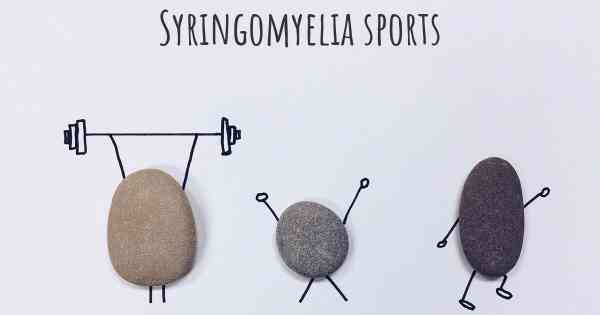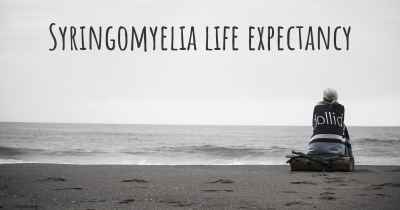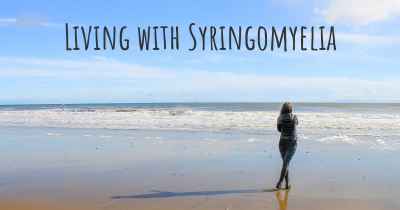Is it advisable to do exercise when affected by Syringomyelia? Which activities would you suggest and how intense should they be?
See if it is advisable for people with Syringomyelia to practice sports and which ones are the most recommended if you have Syringomyelia

Syringomyelia is a rare neurological condition characterized by the formation of a fluid-filled cyst or syrinx within the spinal cord. This can lead to a variety of symptoms, including pain, weakness, numbness, and problems with coordination. If you have been diagnosed with Syringomyelia, you may wonder if it is advisable to engage in exercise and physical activities.
The answer to whether exercise is advisable for individuals with Syringomyelia depends on the severity of the condition and the specific symptoms experienced. It is crucial to consult with your healthcare provider before starting any exercise program to ensure it is safe and appropriate for your individual situation.
That being said, exercise can have several potential benefits for individuals with Syringomyelia:
1. Improved muscle strength and flexibility: Regular exercise can help strengthen the muscles surrounding the affected areas of the spinal cord, potentially improving stability and reducing the risk of injury. It can also help maintain or improve flexibility, which may be beneficial for individuals experiencing stiffness or limited range of motion.
2. Enhanced cardiovascular health: Engaging in aerobic exercises, such as walking, swimming, or cycling, can improve cardiovascular fitness and overall health. This can have a positive impact on your energy levels and well-being.
3. Pain management: Exercise has been shown to release endorphins, which are natural pain-relieving chemicals in the body. Regular physical activity may help reduce pain associated with Syringomyelia, although it is essential to avoid activities that exacerbate your symptoms.
4. Mental well-being: Exercise is known to have positive effects on mental health, including reducing stress, anxiety, and depression. Dealing with a chronic condition like Syringomyelia can be challenging, and incorporating exercise into your routine may help improve your mood and overall quality of life.
When considering exercise with Syringomyelia, it is important to keep the following guidelines in mind:
1. Consult your healthcare provider: Before starting any exercise program, it is crucial to consult with your healthcare provider. They can provide personalized advice based on your specific condition, symptoms, and overall health.
2. Start slowly and gradually: If you are new to exercise or have been inactive for a while, it is essential to start slowly and gradually increase the intensity and duration of your workouts. This allows your body to adapt and reduces the risk of overexertion or injury.
3. Focus on low-impact activities: Engaging in low-impact exercises can be beneficial for individuals with Syringomyelia, as they minimize stress on the joints and spine. Examples of low-impact activities include walking, swimming, stationary cycling, and yoga.
4. Listen to your body: Pay attention to how your body responds to exercise. If you experience increased pain, weakness, or any other concerning symptoms, it is important to stop and consult with your healthcare provider.
5. Modify exercises as needed: Depending on your symptoms and limitations, you may need to modify certain exercises or use assistive devices to ensure safety and comfort. Working with a physical therapist or exercise specialist can help you develop a tailored exercise program.
6. Stay hydrated and take breaks: It is important to stay hydrated during exercise and take regular breaks as needed. Dehydration can exacerbate symptoms, so make sure to drink plenty of water before, during, and after your workouts.
7. Avoid activities that worsen symptoms: Certain activities may exacerbate symptoms associated with Syringomyelia, such as heavy lifting, high-impact exercises, or activities that involve repetitive bending or twisting of the spine. It is crucial to avoid these activities to prevent further damage or discomfort.
Remember, everyone's experience with Syringomyelia is unique, and what works for one person may not work for another. It is essential to listen to your body, work closely with your healthcare provider, and make adjustments to your exercise routine as needed. By doing so, you can potentially reap the benefits of exercise while minimizing the risk of exacerbating your symptoms.
Posted May 22, 2017 by Christina Douthit 1001
Posted May 30, 2017 by Linda 900
Posted Mar 22, 2018 by Tammie 4000
Posted May 21, 2018 by Sue 1400
Posted Jun 20, 2018 by Austyn 3500
Keep a positive attitude always.
Think right and you can fly
The Kingdom of Heaven is within Free your mind and your ass will follow...
Posted Jun 24, 2019 by Jack 2200
Posted May 16, 2017 by María Angélica González gallon 1800
Posted Nov 17, 2017 by Raul 500








